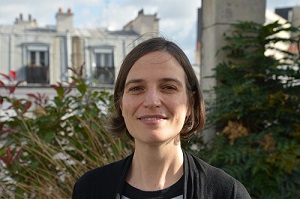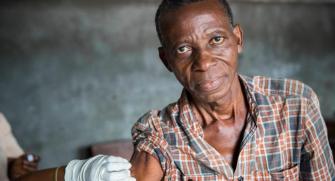Yellow fever: One-fifth of a dose is enough to effectively protect children and people living with HIV during an outbreak
Why were you interested in fractionnal doses of yellow fever vaccine?

Aitana Juan Giner: Yellow fever epidemics affecting densely populated urban areas are a real risk. Although highly effective vaccines are available, global production capacity does not meet the needs during epidemics, often resulting in shortages. For example, in July 2016, the demand for yellow fever vaccine was greater than the globally available doses. Following an initial study in Brazil, the World Health Organization (WHO) recommended the use of fractional doses of yellow fever vaccine in shortage situations at the time.
In collaboration with the Kenya Medical Research Institute (KEMRI), the institute Pasteur in Dakar, and the WHO, Epicentre and MSF conducted a randomized, double-blind clinical trial in Mbarara, Uganda, and Kilifi, Kenya. The purpose of the trial was to assess the immunological response in people who received a fifth dose of yellow fever vaccine compared to the standard dose.
What were you able to highlight?
Aitana Juan Giner: In 2021, our first results published in The Lancet confirmed that the administration of one-fifth of the standard dose of the 4 WHO prequalified yellow fever vaccines was effective and safe, even one year after vaccination, in adults aged 18-59 years. Then, in a second phase of the study, we wanted to know if these results could be applied to children. In epidemic situations, it is indeed recommended to vaccinate children from the age of 6 months.
The clinical trial, which took place at Epicentre's research center in Mbarara, involved administering either one-fifth of a dose of the 17D-213 vaccine, one of the WHO prequalified vaccines, or a standard dose to 420 children aged 9 months to 59 months.
The results are similar to those previously shown in adults, with high levels of seroconversion [acquisition of specific antibodies following vaccination] at 28 days and one year. However, 10 days after vaccination, a lower immune response was observed among children vaccinated with a fractional dose. At this stage, it is still difficult to know the practical implications of this data.
Meanwhile, we plan to continue the follow-up of children 5 years after vaccination, which would provide additional data on the longer-term protection of the vaccine, regardless of the dose, and feed into the upcoming the WHO recommendations on the duration of vaccine protection.
Another sub-study was conducted in parallel at KEMRI in Kenya among people living with HIV, why and what were the results?
Aitana Juan Giner: The results we have observed in the general population are not necessarily generalizable to populations living with HIV. However, given the magnitude of the HIV epidemic in sub-Saharan Africa, where yellow fever is also endemic, it was important to verify the efficacy of fractional doses in this specific population.
In the second phase of the study, between January and May 2019, Prof George M. Warimwe and his team at KEMRI vaccinated 124 people between 18 and 59 years of age, HIV positive with a CD4 count≥200cells/ml with a standard dose of 17D-213 vaccine and 126 with one fifth of the dose. Fractional doses of yellow fever vaccine met the non-inferiority criterion on day 28 post-vaccination, allowing us to state that fractional-dose recommendations can be extended to people living with HIV.
In parallel with these studies, Epicentre is participating in a clinical trial to determine the minimum effective dose of vaccine; results are expected soon.
Learn more about yellow fever
Yellow fever is an acute viral hemorrhagic fever transmitted by certain mosquitoes. It is estimated to cause 30,000 deaths per year, primarily in sub-Saharan Africa and is increasing in Central and South America. Although it causes few or no symptoms in many people, a small percentage of those infected develop severe forms of the disease, resulting in internal bleeding and severe liver and kidney damage. About half of those who reach this stage of yellow fever die within a few days.
photo credit : Caroline Thirion/MSF









